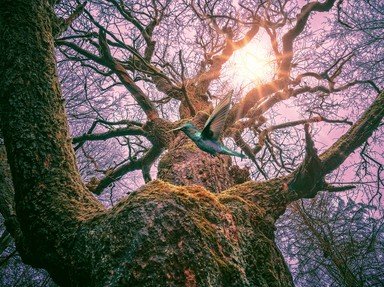Quiz Answer Key and Fun Facts
1. What is the largest tree-dwelling mammal in Australian forests?
2. Giant pandas live in bamboo forests and in zoos around the world. What is the typical gestational period of the giant panda?
3. Saolas are a rare forest dweller in the forests of which mountain range?
4. Which large mammal is known as a "true forest gardener" because some forest fruits will only germinate after passing through its digestive system?
5. The forest cobra is a venomous snake that lives in the Amazon rainforest.
6. The gypsy moth is a forest insect that can cause defoliation and death of its host trees. What has been shown to be an important way that North American states and provinces control the spread of gypsy moths?
7. How do wood frogs survive the winters when it gets too cold for them to remain active?
8. Which owl is named after the environment in which it lives?
9. Woodpeckers have physical characteristics that prevent brain damage when they peck at trees.
10. Which of these forest-dwelling mammals has earthworms as their most important food source?
Source: Author
Trivia_Fan54
This quiz was reviewed by FunTrivia editor
rossian before going online.
Any errors found in FunTrivia content are routinely corrected through our feedback system.

